|
Books Should Be Free Loyal Books Free Public Domain Audiobooks & eBook Downloads |
|
|
Books Should Be Free Loyal Books Free Public Domain Audiobooks & eBook Downloads |
|
Fairy Tales |
|---|
Book type:
Sort by:
View by:
|
By: Edric Vredenberg (1860-?) | |
|---|---|
 My Book Of Favourite Fairy Tales
My Book Of Favourite Fairy Tales
This is a collection on well-known, favorite fairy stories, most of which we all grew up with. They were edited and retold in this volume. | |
By: Friedrich de la Motte Fouqué (1777-1843) | |
|---|---|
 Sintram and His Companions
Sintram and His Companions
Friedrich de la Motte Fouque, also the author of Undine, was a German Romantic writer whose stories were filled with knights, damsels in distress, evil enchantments, and the struggle of good against overpowering evil. 'My strength is as the strength of ten, Because my heart is pure.' Fouque blends the Romantic love for nature and ancient chivalry while telling a powerful story about a young man who yearns for that which he can never attain. | |
By: Hesiod | |
|---|---|
 Works and Days, The Theogony, and The Shield of Heracles
Works and Days, The Theogony, and The Shield of Heracles
Works and Days provides advice on agrarian matters and personal conduct. The Theogony explains the ancestry of the gods. The Shield of Heracles is the adventure of Heracles accepting an enemy's challenge to fight. | |
By: Plato (Πλάτων) (c. 428 BC - c. 347 BC) | |
|---|---|
 Critias
Critias
This is an incomplete dialogue from the late period of Plato's life. Plato most likely created it after Republic and it contains the famous story of Atlantis, that Plato tells with such skill that many have believed the story to be true. Critias, a friend of Socrates, and uncle of Plato was infamous as one of the bloody thirty tyrants. | |
By: Thomas Wentworth Higginson (1823-1911) | |
|---|---|
 Tales of the Enchanted Islands of the Atlantic
Tales of the Enchanted Islands of the Atlantic
The sea has always been, by the mystery of its horizon, the fury of its storms, and the variableness of the atmosphere above it, the foreordained land of romance. In all ages and with all sea-going races there has always been something especially fascinating about an island amid the ocean. It's very existence has for all explorers an air of magic. The order of the tales in the present work follows roughly the order of development, giving first the legends which kept near the European shore, and then those which, like St... | |
By: Unknown | |
|---|---|
 National Nursery Book
National Nursery Book
"The Publishers offer in this little volume of well known and long loved stories to their young readers. The tales which have delighted the children of many generations will, they feel assured, be equally welcome in the nurseries of the present day, which, with the popularity and antiquity of the contents of the volume, justify them in styling it The National Nursery Book." Red Riding Hood, The Three Bears, Mother Hubbard, Cinderella and many other well known stories, poems, nursery rhymes and songs are included in this little book. Note that the Punch and Judy story does include a lot of gratuitous violence but then that is what Punch and Judy seem to be all about, eh? | |
 Fall of the Nibelungs
Fall of the Nibelungs
"The Fall of the Nibelungs" is Margaret Armour's plain prose translation from the middle high German of the "Nibelungenlied", a poetic saga of uncertain authorship written about the year 1200. The story is believed by many to be based on the destruction of the Burgundians, a Germanic tribe, in 436 by mercenary Huns recruited for the task by the Roman general Flavius Aëtius. The introduction to the 1908 edition summarizes the story, "And so 'the discord of two women,' to quote Carlyle, 'is as a little... | |
By: Willis George Emerson (1856-1918) | |
|---|---|
 Smoky God or a Voyage to the Inner World
Smoky God or a Voyage to the Inner World
The Smoky God, or A Voyage Journey to the Inner Earth is the narrative of an aged Norwegian sailor compelled before he dies to tell the story of how he found a passageway to the center of the earth and discovered a world peopled with giants. | |
By: A. G. Seklemian | |
|---|---|
 Golden Maiden and Other Folk Tales and Fairy Stories Told in Armenia
Golden Maiden and Other Folk Tales and Fairy Stories Told in Armenia
Armenians trace their history back to before the time of the Babylonians and earliest recorded history - in fact, to Togarmah, a grandson of Japhet, Noah's son, who settled in Armenia after the Ark came to rest on mount Ararat. Armenia was also the first State in the world to adopt Christianity as their official religion, around the 3rd Century AD. This book contains many wonderful folk and fairy tales culled from this long history of the Armenian country people, to whom all nature is full of stories, by the scholar and storyteller Mr. A. G. Seklemian. - Summary by Noel Badrian | |
By: Abby Langdon Alger (1850-1917) | |
|---|---|
 In Indian Tents
In Indian Tents
A collection of the legends and stories of North Eastern Indians "In the summer of 1882 and 1883, I was associated with Charles G. Leland in the collection of the material for his book The Algonquin Legends of New England, published in 1884. I found the work so delightful, that I have gone on with it since, whenever I found myself in the neighborhood of Indians. The supply of legends and tales seems to be endless, one supplementing and complementing another, so that there may be a dozen versions of one tale, each containing something new... | |
By: Ada M. Marzials | |
|---|---|
 More Tales in the Land of Nursery Rhyme
More Tales in the Land of Nursery Rhyme
| |
By: Ada [Illustrator] Budell | |
|---|---|
 Stories to Read or Tell from Fairy Tales and Folklore
Stories to Read or Tell from Fairy Tales and Folklore
| |
By: Aesop (620 BC - 563 BC) | |
|---|---|
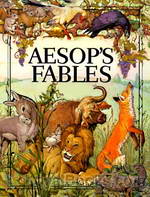 Aesop's Fables
Aesop's Fables
As children, our first experience of the magic of talking animals, the conflict between good and evil, the battle of wits between the cunning and the innocent most probably came from Aesop's Fables. These delightful, pithy and brief narratives are simple, easy to understand and convey their message in a memorable and charming fashion. Aesop's Fables by Aesop consists of about 600 tales, some well-loved and familiar, others less known but just as entertaining and educative and help us map the perimeters of our moral universe... | |
By: Albert Ernest Jenks | |
|---|---|
 The Bontoc Igorot
The Bontoc Igorot
The Bontoc Igorotby Albert Ernest JenksPREFACEAfter an expedition of two months in September, October, and November, 1902, among the people of northern Luzon it was decided that the Igorot of Bontoc pueblo, in the Province of Lepanto-Bontoc, are as typical of the primitive mountain agriculturist of Luzon as any group visited, and that ethnologic investigations directed from Bontoc pueblo would enable the investigator to show the culture of the primitive mountaineer of Luzon as well as or better than investigations centered elsewhere... | |
By: Alexander Chodzko (1804-1891) | |
|---|---|
 Fairy Tales of the Slav Peasants and Herdsmen
Fairy Tales of the Slav Peasants and Herdsmen
| |
By: Ambrose Bierce (1842-1914) | |
|---|---|
 Cobwebs from an Empty Skull
Cobwebs from an Empty Skull
Ambrose Bierce's collection of short parables, published under the pen name of Dod Grile, is similar to Aesop's Fables. This compilation is comprised of "Fables of Zambri, the Parsee," "Brief Seasons of Intellectual Dissipation" and the "Divers Tales," all of which were first serialized in the magazine "FUN." A great read for any lover of short stories or poetry with faraway lands, talking animals and supernatural occurrences! | |
By: Anatole France (1844-1924) | |
|---|---|
 Thais
Thais
The fourth century ascetic Paphnuce, journeys from his remote desert hermitage to urban Alexandria determined to locate the stunningly beautiful and libertine actress, Thais. He earnestly desires that she convert to Christianity. Gaining an audience by deception, the hermit passionately speaks to the actress of eternity. Remarkably, Thais repents and retires to a convent for the rest of her days. The hermit however, cannot rid his mind of her charms, not even with the help of the most severe austerities. After years of anguish the monk learns of Thais' immanent demise and hastens to her side. There he confesses the unspeakable. | |
By: André Gide (1869-1951) | |
|---|---|
 Prometheus Illbound
Prometheus Illbound
There is a witty and absurdist character to this contemporary setting of the plight of Prometheus, in which Zeus appears as a tremendously wealthy banker, meting out gratuitous fortune. Prometheus' troubled relationship with his liver-devouring eagle provides a means of insight for those he encounters. Rather than a myth the story has the nature of a fable. | |
By: Andrew Lang (1844-1912) | |
|---|---|
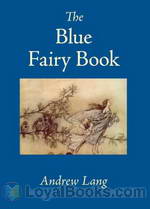 The Blue Fairy Book
The Blue Fairy Book
Published in 1889, The Blue Fairy Book is the first book in the series of story collections known as Andrew Lang's “Coloured” Fairy Books, which bring to life the classic fairytales by Grimm, Madame d'Aulnoy and Perrault among other folklore sources. Most captivating is the fact that the collection features the stories in pristine an unaltered conditions, therefore they contain a darker side than the polished versions most are familiar with from childhood memories. Featuring 37 tales, The... | |
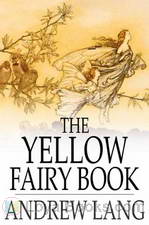 The Yellow Fairy Book
The Yellow Fairy Book
Published in 1894, The Yellow Fairy Book is the fourth installment in the series of fairytale collections known as Andrew Lang's “Coloured” Fairy Books and is comprised of stories collected from various foreign language sources including French, German, English, Scottish, Russian, and Polish. Moreover, the tales not only intend to entertain, but also offer an underlying didactic purpose, as many of the stories place an important emphasis on righteous behavior. Featuring 48 stories, The Yellow... | |
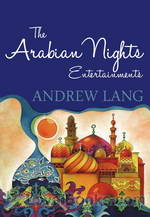 The Arabian Nights
The Arabian Nights
The Arabian Nights is a collection of Perso-Arabic folk tales and other stories. The collection, or at least certain stories drawn from it (or purporting to be drawn from it), became widely known in the West from the 18th century, after it was translated from the Arabic — first into French and then into English and other European languages. The first English language edition, based on Galland’s French rather than the original Arabic, rendered the title as The Arabian Nights’ Entertainment – and this, or simply The Arabian Nights, has been the title by which it has been best known to English-speaking people ever since. | |
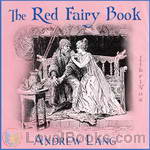 The Red Fairy Book
The Red Fairy Book
The Red Fairy Book is the second in a series of twelve books known as Andrew Lang’s Fairy Books or Andrew Lang’s “Coloured” Books. The series was immensely popular and proved of great influence in children’s literature, increasing the popularity of fairy tales over tales of real life. | |
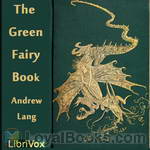 The Green Fairy Book
The Green Fairy Book
Andrew Lang's Fairy Books or Andrew Lang's "Coloured" Fairy Books constitute a twelve-book series of fairy tale collections. Although Andrew Lang did not collect the stories himself from the oral tradition, the extent of his sources, who had collected them originally (with the notable exception of Madame d'Aulnoy), made them an immensely influential collection, especially as he used foreign-language sources, giving many of these tales their first appearance in English. As acknowledged in the prefaces, although Lang himself made most of the selections, his wife and other translators did a large portion of the translating and telling of the actual stories... | |
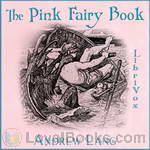 The Pink Fairy Book
The Pink Fairy Book
All people in the world tell nursery tales to their children, and the stories are apt to be like each other everywhere. A child who has read the Blue and Red and Yellow Fairy Books will find some old friends with new faces in the Pink Fairy Book. Courage, youth, beauty, kindness, have many trials, but they always win the battle; while witches, giants, unfriendly cruel people, are on the losing hand. So it ought to be, and so, on the whole, it is and will be; and that is all the moral of fairy tales... | |
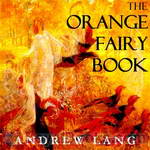 The Orange Fairy Book
The Orange Fairy Book
Andrew Lang's Fairy Books or Andrew Lang's "Coloured" Fairy Books constitute a twelve-book series of fairy tale collections. Although Andrew Lang did not collect the stories himself from the oral tradition, the extent of his sources, who had collected them originally (with the notable exception of Madame d'Aulnoy), made them an immensely influential collection, especially as he used foreign-language sources, giving many of these tales their first appearance in English. As acknowledged in the prefaces, although Lang himself made most of the selections, his wife and other translators did a large portion of the translating and telling of the actual stories... | |
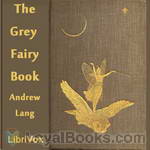 The Grey Fairy Book
The Grey Fairy Book
The tales in the Grey Fairy Book are derived from many countries—Lithuania, various parts of Africa, Germany, France, Greece, and other regions of the world. They have been translated and adapted by Mrs. Dent, Mrs. Lang, Miss Eleanor Sellar, Miss Blackley, and Miss hang. 'The Three Sons of Hali' is from the last century 'Cabinet des Fees,' a very large collection. The French author may have had some Oriental original before him in parts; at all events he copied the Eastern method of putting tale within tale, like the Eastern balls of carved ivory... | |
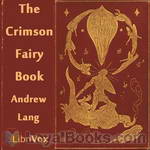 The Crimson Fairy Book
The Crimson Fairy Book
The Crimson Fairy Book contains thirty-six stories collected from around the world and edited by Andrew Lang. Many tales in this book are translated, or adapted, from those told by mothers and nurses in Hungary; others are familiar to Russian nurseries; the Servians are responsible for some; a rather peculiarly fanciful set of stories are adapted from the Roumanians; others are from the Baltic shores; others from sunny Sicily; a few are from Finland, and Iceland, and Japan, and Tunis, and Portugal... | |
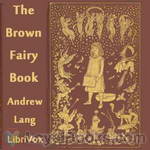 The Brown Fairy Book
The Brown Fairy Book
Andrew Lang’s Brown Fairy Book (1904) was a beautifully produced and illustrated edition of fairy tales that has become a classic. This was one of many other collections of fairy tales, collectively known as Andrew Lang’s Fairy Books. | |
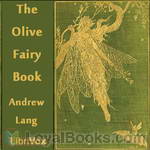 The Olive Fairy Book
The Olive Fairy Book
Andrew Lang’s Olive Fairy Book (1907) was a beautifully produced and illustrated edition of fairy tales that has become a classic. This was one of many other collections of fairy tales, collectively known as Andrew Lang’s Fairy Books. | |
 The Fairy Books of Andrew Lang
The Fairy Books of Andrew Lang
| |
 Violet Fairy Book
Violet Fairy Book
Andrew Lang’s Violet Fairy Book (1901) was a beautifully produced and illustrated edition of fairy tales that has become a classic. This was one of many other collections of fairy tales, collectively known as Andrew Lang’s Fairy Books. | |
 The Lilac Fairy Book
The Lilac Fairy Book
| |
 Prince Prigio From "His Own Fairy Book"
Prince Prigio From "His Own Fairy Book"
| |
 Prince Ricardo of Pantouflia being the adventures of Prince Prigio's son
Prince Ricardo of Pantouflia being the adventures of Prince Prigio's son
| |
 Prince Prigio
Prince Prigio
| |
 Custom and Myth
Custom and Myth
CUSTOM AND MYTHINTRODUCTION.Though some of the essays in this volume have appeared in various serials, the majority of them were written expressly for their present purpose, and they are now arranged in a designed order. During some years of study of Greek, Indian, and savage mythologies, I have become more and more impressed with a sense of the inadequacy of the prevalent method of comparative mythology. That method is based on the belief that myths are the result of a disease of language, as the pearl is the result of a disease of the oyster... | |
By: Annie F. Johnston (1863-1931) | |
|---|---|
 The Legend of the Bleeding-heart
The Legend of the Bleeding-heart
| |
By: Anonymous (1821-1890) | |
|---|---|
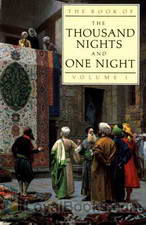 The Book of A Thousand Nights and a Night
The Book of A Thousand Nights and a Night
This is a collection of stories collected over thousands of years by various authors, translators and scholars. The are an amalgam of mythology and folk tales from the Indian sub-continent, Persia, and Arabia. No original manuscript has ever been found for the collection, but several versions date the collection’s genesis to somewhere between AD 800-900. The stories are wound together under the device of a long series of cliff-hangers told by Shahrazad to her husband Shahryar, to prevent him from executing her... | |
 Beauty and the Beast
Beauty and the Beast
| |
 The Three Bears
The Three Bears
| |
 Aladdin or The Wonderful Lamp
Aladdin or The Wonderful Lamp
| |
 Little Cinderella
Little Cinderella
| |
 Battle of the Monkey & the Crab
Battle of the Monkey & the Crab
| |
 Cinderella
Cinderella
| |
 Jokes For All Occasions
Jokes For All Occasions
JOKES FOR ALL OCCASIONSPREFACEThe ways of telling a story are as many as the tellers themselves. It is impossible to lay down precise rules by which any one may perfect himself in the art, but it is possible to offer suggestions by which to guide practise in narration toward a gratifying success. Broadly distinguished, there are two methods of telling a story. One uses the extreme of brevity, and makes its chief reliance on the point. The other devotes itself in great part to preliminary elaboration in the narrative, making this as amusing as possible, so that the point itself serves to cap a climax... | |
By: Arabella Buckley (1840-1929) | |
|---|---|
 The Fairyland of Science
The Fairyland of Science
“I have promised to introduce you today to the fairy-land of science — a somewhat bold promise, seeing that most of you probably look upon science as a bundle of dry facts, while fairy-land is all that is beautiful, and full of poetry and imagination. But I thoroughly believe myself, and hope to prove to you, that science is full of beautiful pictures, of real poetry, and of wonder-working fairies…” (From the Introduction to The Fairyland of Science) | |
By: Arthur Ransome (1884-1967) | |
|---|---|
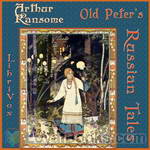 Old Peter's Russian Tales
Old Peter's Russian Tales
Arthur Ransome is best known for his ‘Swallows and Amazons’ series of children’s books. This is the only example of his fiction in the public domain. These stories are all from Russian folklore, some comparatively well-known, others less so. Ransome spent some years in Russia as a newspaper correspondent fir the ‘Daily News’ and the ‘Manchester Guardian’ and was peripherally involved in the revolution. In the late twenties he married Evgenia Shvelpina, Trotsky’s secretary, retired from newspapers and started writing his children’s books. | |
By: Basil Hall Chamberlain (1850-1935) | |
|---|---|
 The Silly Jelly-Fish
The Silly Jelly-Fish
| |
By: C. S. (Charles Seddon) Evans (1883-1944) | |
|---|---|
 The Sleeping Beauty
The Sleeping Beauty
| |
By: Carl Sandburg (1878-1967) | |
|---|---|
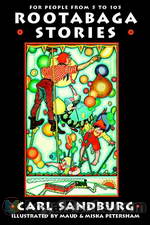 Rootabaga Stories
Rootabaga Stories
Carl Sandburg is beloved by generations of children for his Rootabaga Stories and Rootabaga Pigeons (which is not in the public domain), a series of whimsical, sometimes melancholy stories he originally created for his own daughters. The Rootabaga Stories were born of Sandburg’s desire for “American fairy tales” to match American childhood. He felt that the European stories involving royalty and knights were inappropriate, and so populated his stories with animals, skyscrapers, trains, corn fairies, and other colorful characters. | |
By: Carlo Collodi (1826-1890) | |
|---|---|
 Pinocchio
Pinocchio
This is the wonderful story of Pinocchio, the puppet who must learn many lessons before he can become a real boy. Carved by a woodcarver named Geppetto in a small Italian village, he dreamed of becoming a real boy but strays from the path of goodness many times and is very willing to listen to temptation. He has also been used as a character who is prone to telling lies and fabricating stories for various reasons. The story has appeared in many adaptations in other mediums. Pinocchio has been called an icon of modern culture, and one of most reimagined characters in the pantheon of children's literature... | |
By: Caroline Snowden Guild | |
|---|---|
 Violet: A Fairy Story
Violet: A Fairy Story
A charming fairytale -- with realistic touches -- from the mid-19th Century. | |
By: Catherine Crowe (1803-1876) | |
|---|---|
 Night-Side of Nature; Or, Ghosts and Ghost-Seers
Night-Side of Nature; Or, Ghosts and Ghost-Seers
The stories in Volume 1 centre on dreams, psychic presentiments, traces, wraiths, doppelgängers, apparitions, and imaginings of the after-life. Crowe's vivid tales, written with great energy and imagination, are classic examples of nineteenth-century spiritualist writing and strongly influenced other authors as well as providing inspiration for later adherents of ghost-seeing and psychic culture. - Summary by Cambridge University Press | |
By: Cecil Henry Bompas | |
|---|---|
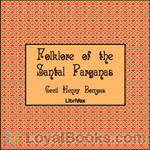 Folklore of the Santal Parganas
Folklore of the Santal Parganas
This is an intriguing collection of folklore from the Santal Parganas, a district in India located about 150 miles from Calcutta. As its Preface implies, this collection is intended to give an unadulterated view of a culture through its folklore. It contains a variety of stories about different aspects of life, including family and marriage, religion, and work. In this first volume, taken from Part I, each story is centered around a particular human character. These range from the charmingly clever (as in the character, The Oilman, in the story, “The Oilman and His Sons”) to the tragically comical (as in the character, Jhore, in the story “Bajun and Jhore”)... | |
By: Charles Dickens (1812-1870) | |
|---|---|
 The Magic Fishbone A Holiday Romance
The Magic Fishbone A Holiday Romance
| |
By: Charles E. Carryl (1841-1920) | |
|---|---|
 The Admiral's Caravan
The Admiral's Caravan
| |
By: Charles Kingsley (1819-1875) | |
|---|---|
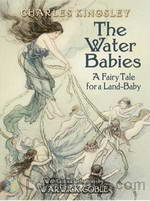 The Water-Babies
The Water-Babies
First published in 1863, The Water Babies by Rev Charles Kingsley became a Victorian children's classic along with J.M. Barrie's Peter Pan and Lewis Caroll's Alice books. It is an endearing and entertaining novel that can equally be enjoyed by adult readers as well. However, it fell out of favor in later years since it contained many ideas that are considered politically incorrect and offensive today from a humanitarian perspective. The Water Babies, A Fairy Tale for a Land Baby to give the book its complete title tells the story of Tom, a young orphan chimney-sweep in Victorian London... | |
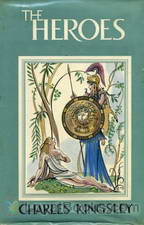 The Heroes, or Greek Fairy Tales for my Children
The Heroes, or Greek Fairy Tales for my Children
The Heroes, or Greek Fairy Tales for my Children by Charles Kingsley is a collection of three Greek mythology stories: Perseus, The Argonauts, and Theseus. The author had a great fondness for Greek fairy tales and believed the adventures of the characters would inspire children to achieve higher goals with integrity. | |
By: Charles Perrault (1628-1703) | |
|---|---|
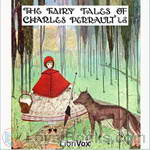 The Fairy Tales of Charles Perrault
The Fairy Tales of Charles Perrault
This book is an early collection of ten well-known fairy tales. It is thought to have begun the genre of fairy tales. | |
 Contes des fées
Contes des fées
| |